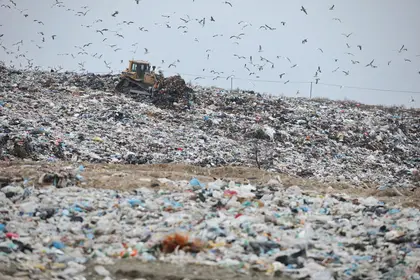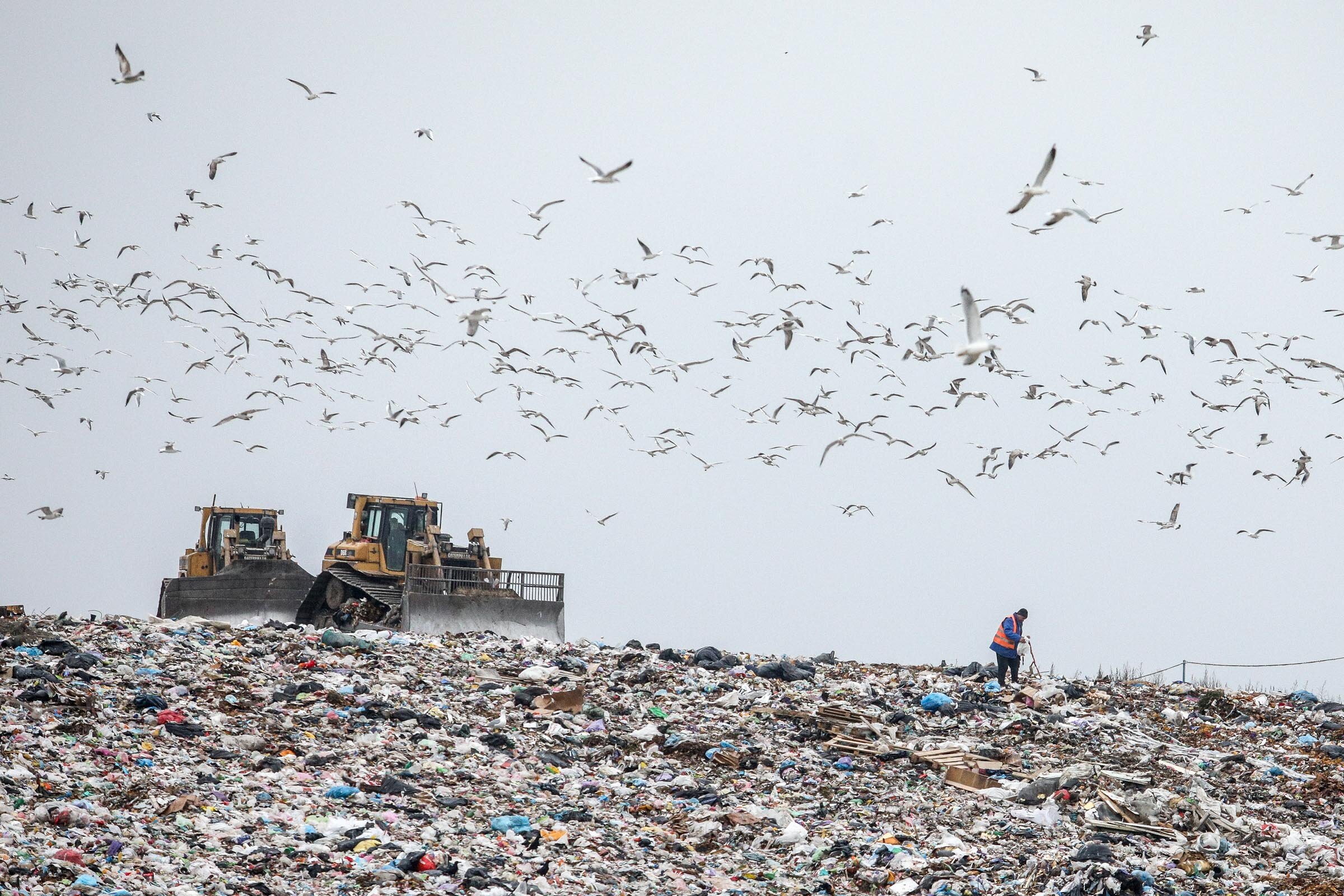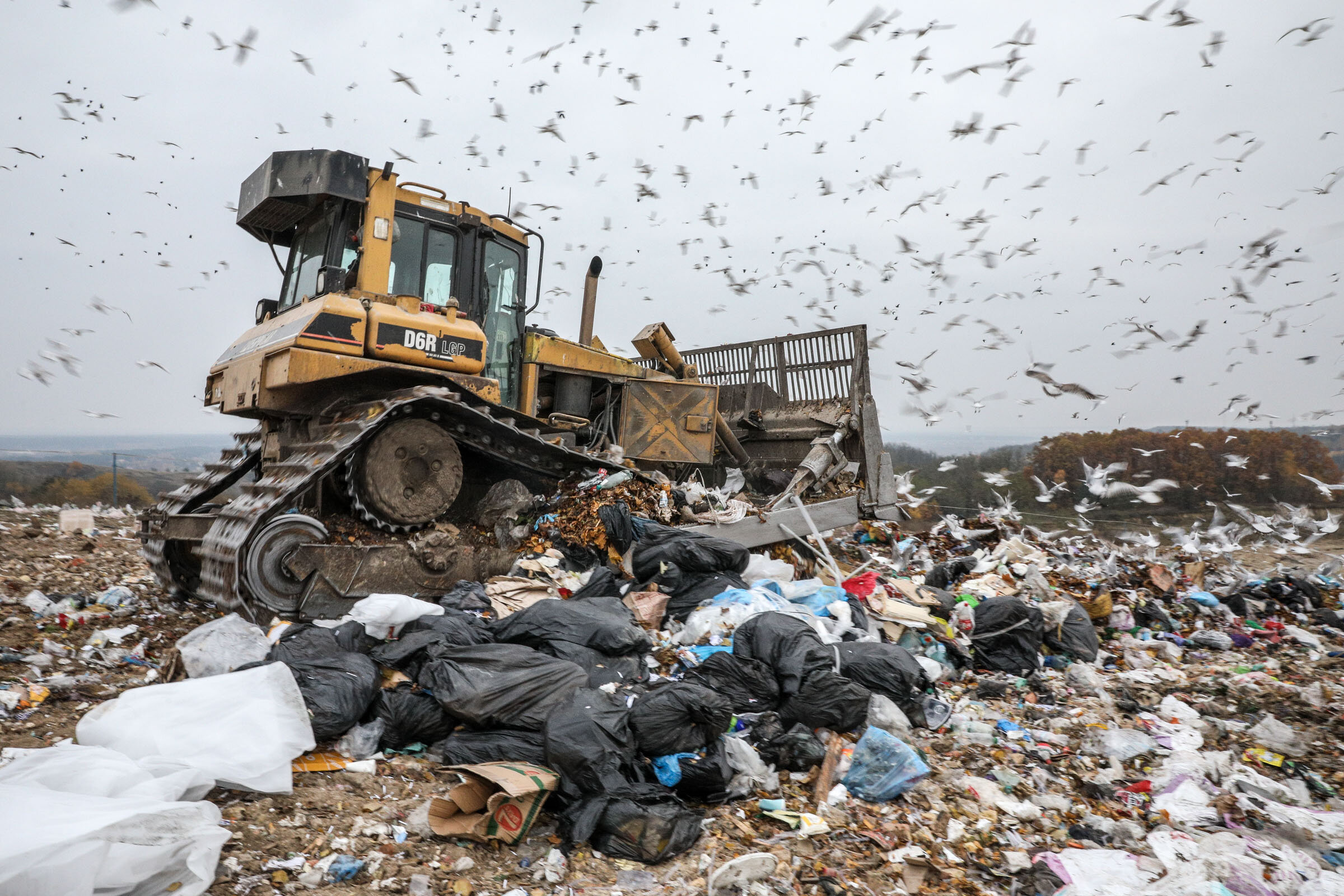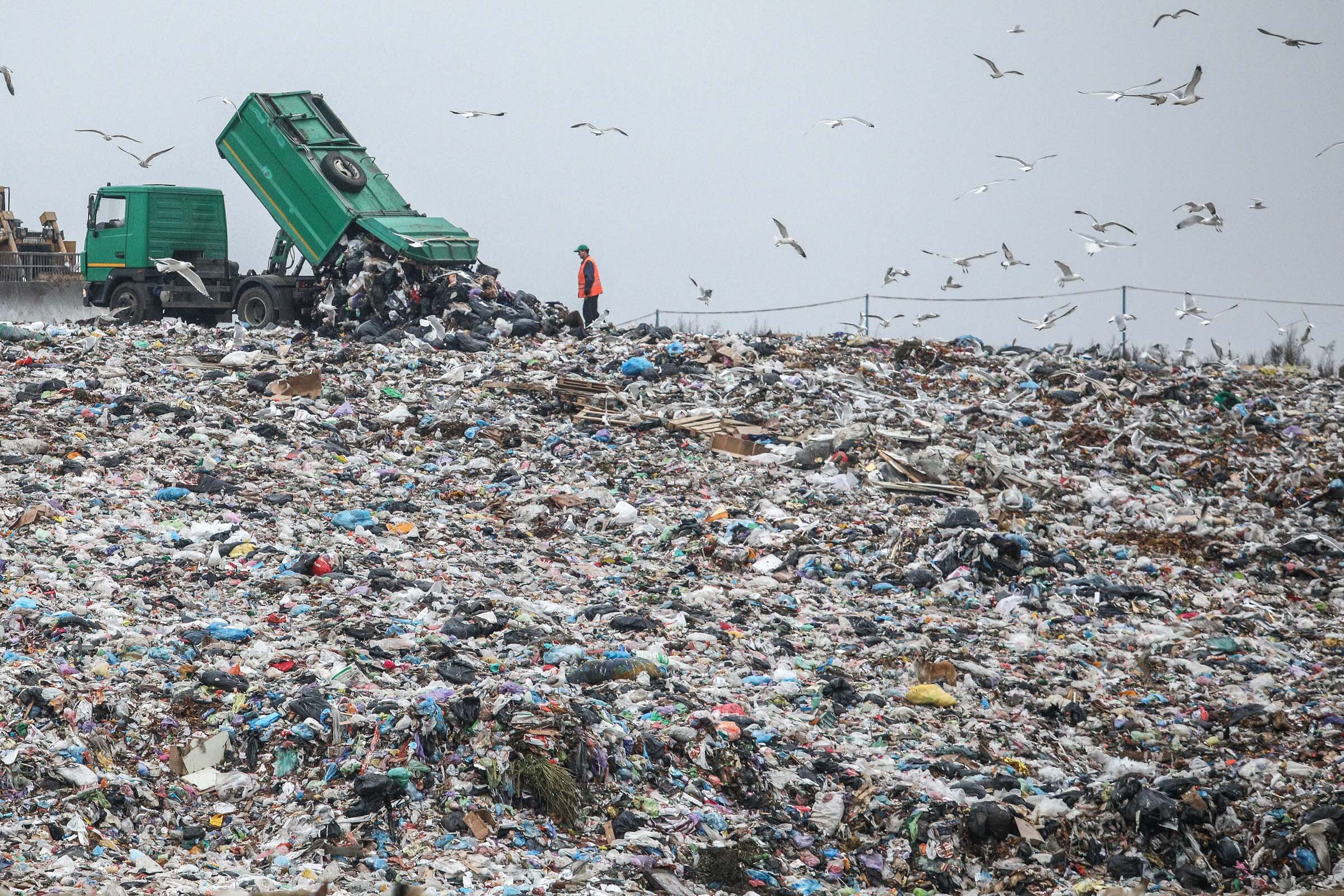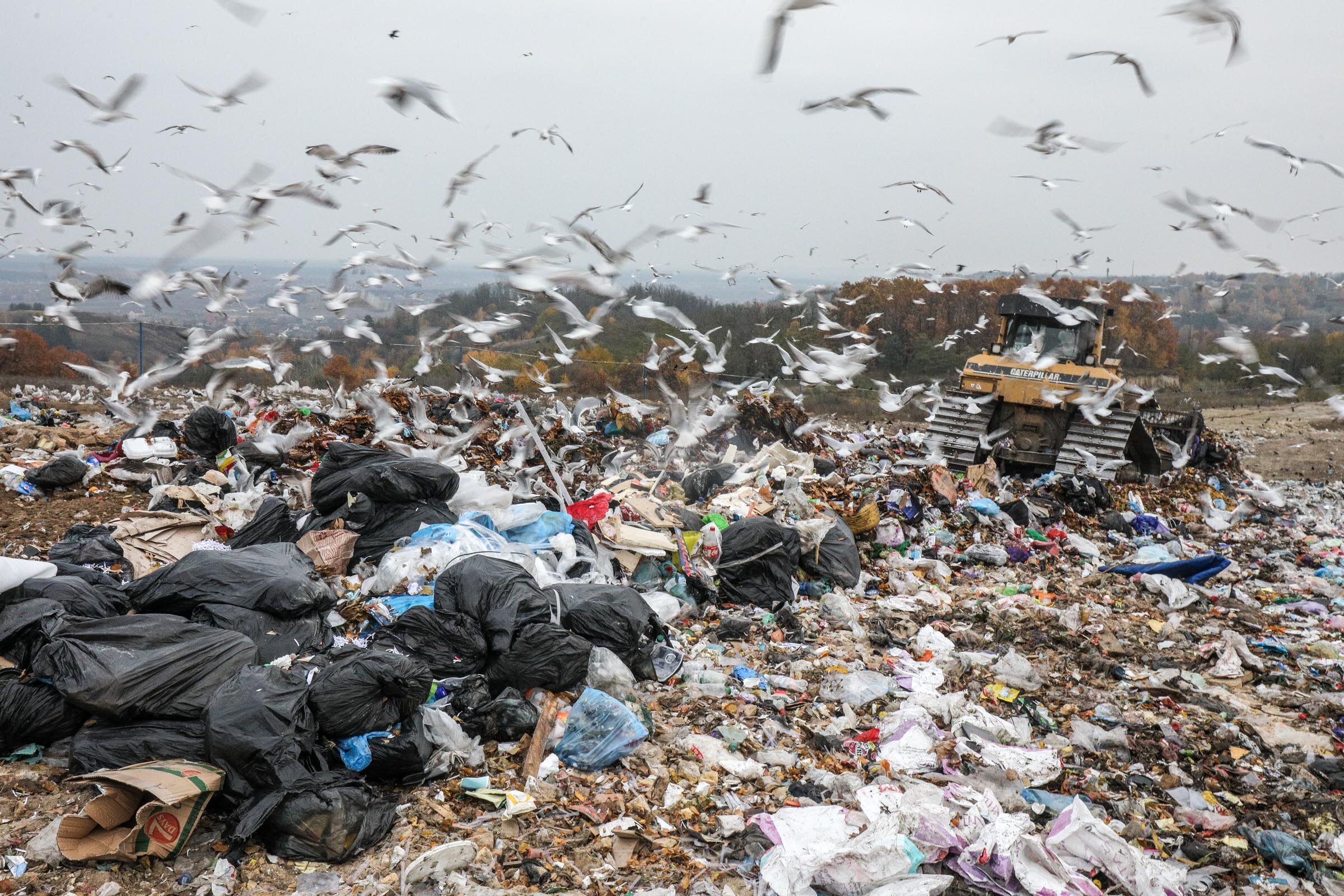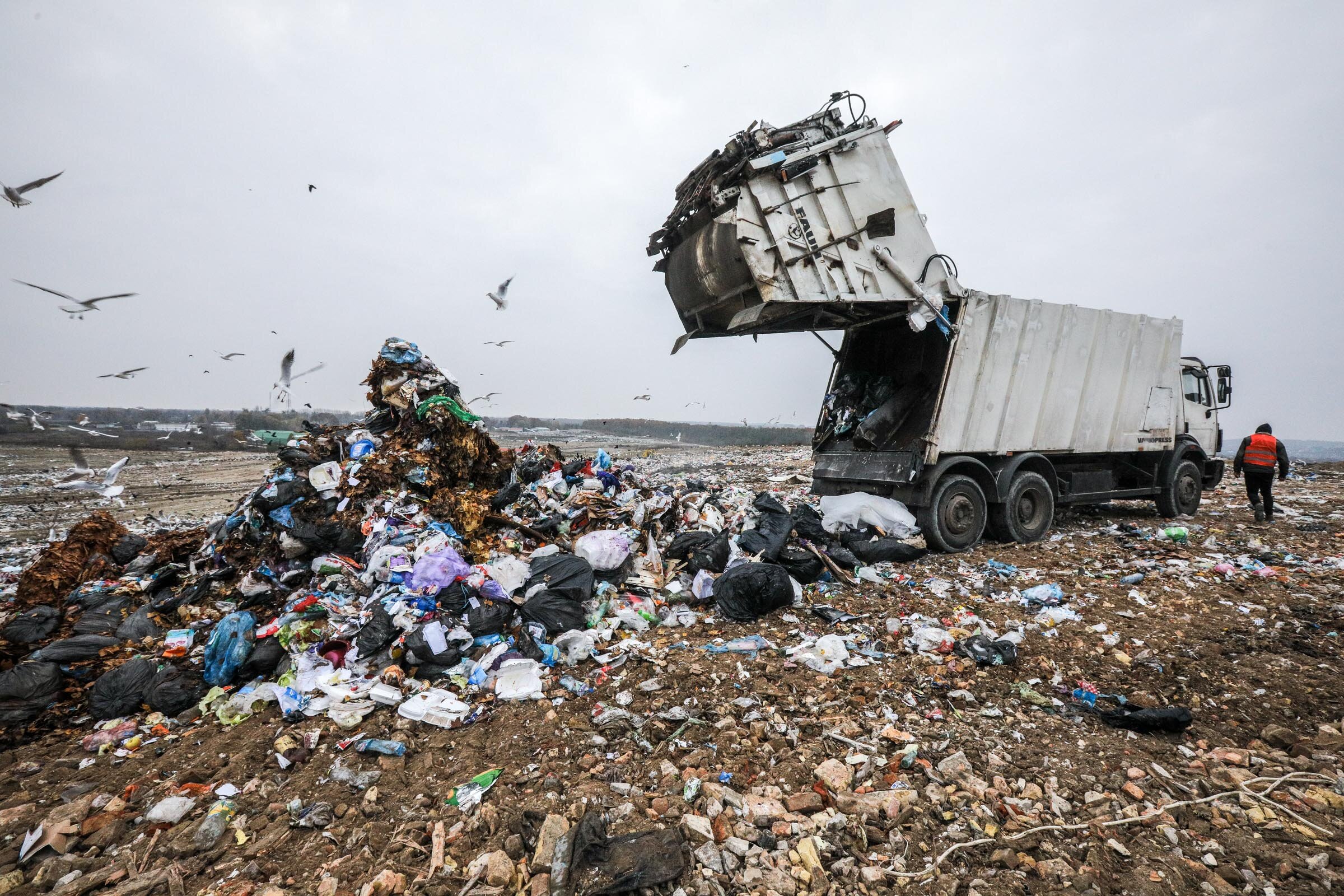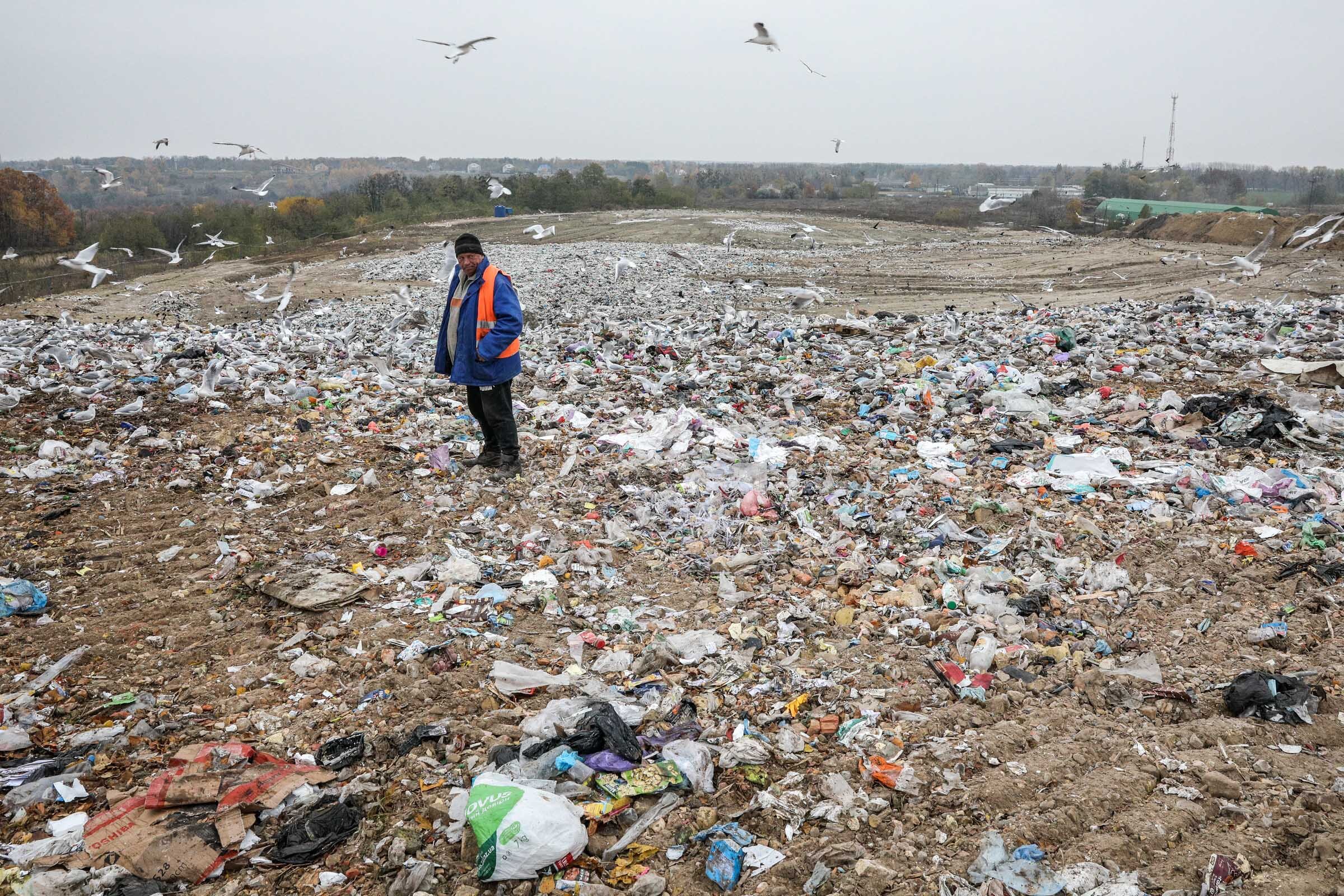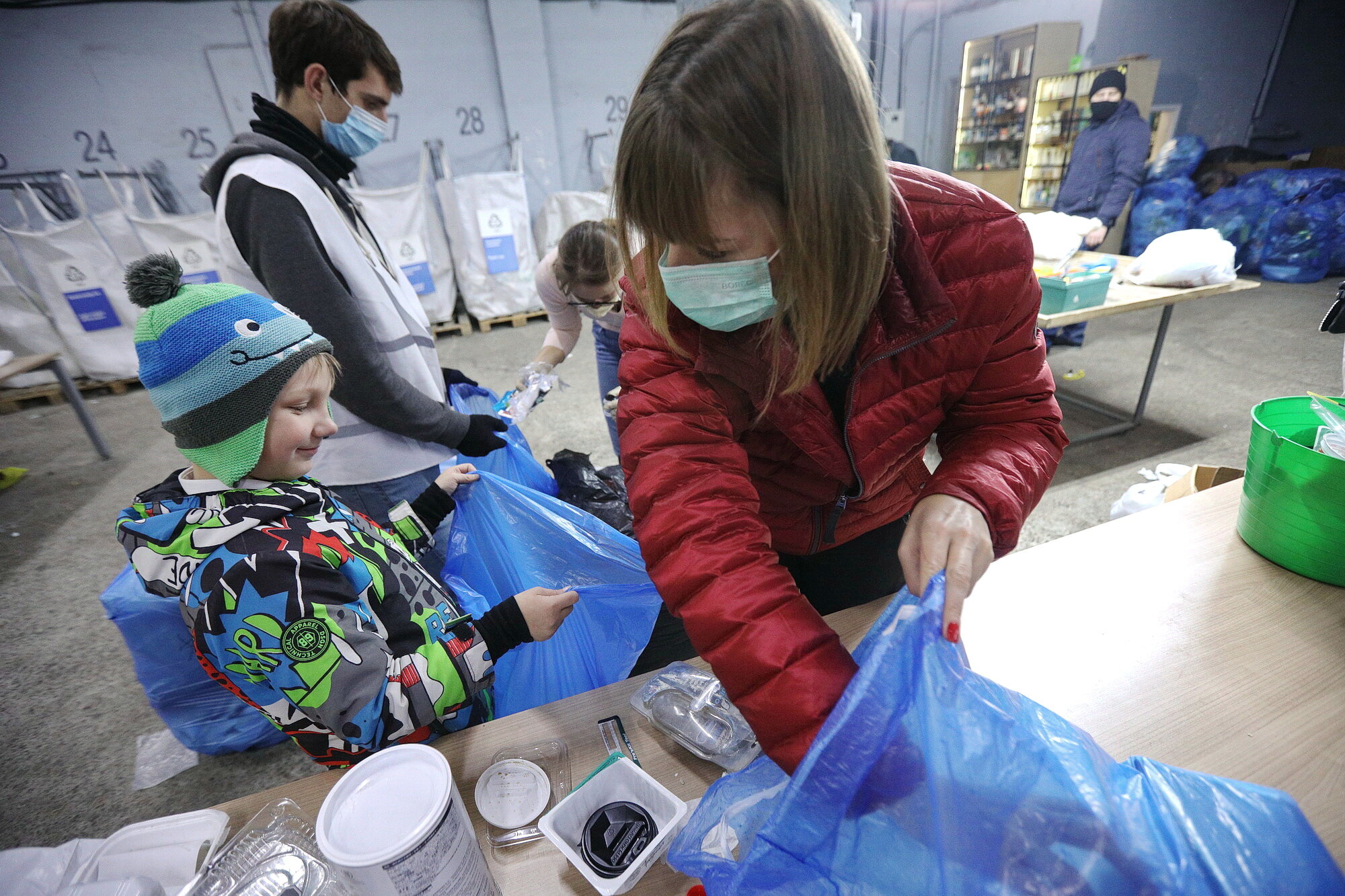Ukraine’s landfills are overflowing and life-threatening.
The country has 6,107 legal landfills and dumps and 26,610 illegal dumps. Most of them can’t hold any more waste and don’t meet safety standards, posing great harm to the environment and public health.
JOIN US ON TELEGRAM
Follow our coverage of the war on the @Kyivpost_official.
The Hrybovytske landfill in Lviv Oblast, for instance, was closed only after it took the lives of one ecologist and three firefighters, who were buried under waste as they tried to extinguish a fire.
Meanwhile, a 64-hectare landfill in Kyiv Oblast, the largest one in Ukraine, is dangerously overloaded.
The only way out is safe disposal of waste through recycling. But Ukraine recycles only about 6% of its waste, and without greater state support, it will be mission impossible to ramp up the volume.
Progress would mean building recycling factories. Ukraine, remarkably, has none. As a result, the small amount of recycling done by private firms is all there is to battle the issue.
One example
Most solid waste goes to landfills and dumps, where it decomposes and emits toxic and polluting materials.
Apart from amassing microplastic that takes centuries to break down and can kill animals if they injest it, landfills and dumps accumulate biogas and leach harmful liquids. Biogas can ignite fires and leachate can poison water supplies.
That’s why both need to be collected. While biogas can be collected and used to generate energy, leachate can only be filtered and then discharged back into the environment when it’s safe.
Legal landfills are equipped with special systems that protect from contamination, but the illegal ones aren’t. At the same time, most legal landfills were created dozens of years ago and don’t meet safety standards anymore.
In Pidhirtsi, for example, a village 28 kilometers south of Kyiv, there is a landfill No. 5. It started to work 34 years ago and, as of today, about 465,000 tons of trash are buried there every year. Ecologists were concerned about its danger back in 2007 when they found out that some poisonous substances leaked from it into the groundwater.
Andrii Hrushchynskyi, the head of Kyivspetstrans, a municipal company which operates this landfill, says that it will be made safer and replaced when another landfill or a recycling plant opens.
“The project of the recovery of the (landfill) includes covering the trash with a special film, forming a layer to collect biogas, installing infrastructure for rainwater and leachate drainage,” Hrushchynskyi says.
After the landfill is closed, it will be necessary to keep a drainage system and biogas extraction system working even after the shutdown.
The only safe alternative is to build solid waste recycling factories, which would collect recyclable material, sort it and sell to different companies, thus reducing the amount of waste that ends up in landfills.
Why no factories?
Periodically officials and mayors of Zhytomyr, Chernihiv, Kyiv and other Ukrainian cities promise to build a recycling plant but never deliver. Experts say that the officials fail to fulfill the promises for several reasons: lack of funding, flawed legislation and no will to proceed.
For instance, in 2013, a solid waste recycling plant opened in Rivne Oblast, only to be closed soon after that. The reason was the absence of fees for recycling, which people should pay in their utility bills, which the plant to live off.
The plant has been inactive for seven years.
“First of all, Ukraine must pass laws that will allow it to build the (recycling) industry. As of now, the law on waste management has only been passed in the first reading,” Hrushchynskyi says.
Olha Melen-Zabramna, head of legal unit at nonprofit Environment People Law, agrees that Ukraine needs a new law on waste management, which would include clauses on recycling. And when the law introduces fees for recycling, specialized plants will appear.
Today Ukrainians pay for a waste management service that inlcudes two components: waste collecting and burial. Most European countries, meanwhile, pay for collecting, recycling and disposing. And Kyivans pay for the service only about Hr 36 ($1.3) per month, which isn’t enough to fund recycling.
“When we say that European waste recycling companies have multibillion dollar turnovers, that’s true, but it’s because the waste recycling rate is between 60 and 150 euros per ton,” Hrushchynskyi says.
Apart from the legislature, Melen-Zabramna says that Ukraine lacks money to fund technology research and human capital to educate the public, primarily local residents who often speak against the construction of a plant near their homes.
Authorities in Lviv, Khmelnytskyi and Kharkiv oblasts have, despite the obstacles, started building recycling plants.
Eugenia Aratovska, founder of nonprofit No Waste Ukraine, however, thinks they are rushing. First, Ukrainians should learn how to sort waste and only then build solid waste recycling plants, she says.
All solid waste, including paper, glass, plastic and metals, is thrown into one container in Ukraine, which would make it difficult for a recycling plant to sort the waste and as a result, reduce the amount of recyclable material a plant can sell in the end, Aratovska says.
Sorting organizations
Despite all obstacles, some volunteers still recycle the waste to reduce the amount of garbage in landfills. One of the organizations sorting the recyclable materials is No Waste Ukraine.
The employees of the station on 25/4 Saperno-Slobidska St. collect glass, paper and plastic. They also help people sort waste and then deliver it to the intermediary companies that, in turn, deliver it to the recycling companies.
According to Aratovska from No Waste Ukraine, there are about 100 recycling companies in the country. For No Waste Ukraine, it is difficult to collect and store a lot of waste at once, so the company cooperates with intermediaries. The recyclable materials go to glass factory Vetropack in Gostomel, plant Polygreen in Fastiv, responsible for polymer recycling and others.
According to the organization’s report, in 2019, No Waste Ukraine collected and delivered 214 tons of recyclable materials.
Apart from No Waste Ukraine, municipal enterprise Kyivkomunservis is contributing to the development of the recycling infrastructure in the capital.
The company has installed about 3,000 net bins that are designed for containing various kinds of waste altogether. However, net bins are less sustainable than bell bins, which require people to separate different waste from one another before throwing away, as the separated waste can later be sold. For that reason, Kyivkomunservis has started installing bell bins for glass, paper and plastic across Kyiv. There are now 759 of them, but according to Maksym Liashkevych, the enterprise’s head, the aim is to reach 1,000 bins in the foreseeable future.
You can also highlight the text and press Ctrl + Enter


